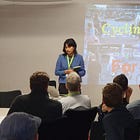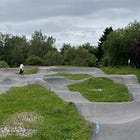Contextualising Mobility: Stakeholder Inclusion and Social Understanding in Active Mobility Projects
Lessons from our Research on Bonaire
Mobility, as a dynamic practice, is shaped not only by infrastructure but also by the intricate social contexts that surround it. Understanding this interplay is crucial when designing strategies that aim to produce lasting change. Changes in mobility practices do not happen overnight; they require time, patience, and a deep understanding of the context in which they occur (Taillandier et al., 2023). This article aims to showcase how understanding the social context of mobility can help to engage stakeholders to work for longer-term results, using the research project in Bonaire as an example.
Recognising the importance of long-term perspectives, the Urban Cycling Institute launched a multi-year project in partnership with the Ministry of Health, Welfare, and Sport, as well as Baislife, a local organisation that promotes cycling. This project aims to encourage active mobility and address related health inequalities in Bonaire. The experience gained in the first two years of this project serves as an example of what difficulties can be encountered in understanding the social context when coming from outside to implement sustainability projects. And the importance of working through these challenges to ensure the recommendations are based on a complete picture of the situation, that all stakeholders are included so that the final results are successful in the long term, and above all, inclusive to avoid the reproduction of social or power dynamics.
The project is planned over a four-year period to ensure that recommendations are developed collaboratively and not imposed from the outside. This approach aims to create a genuine, lasting impact rather than just providing short-term solutions. The initiative follows a step-by-step process, adapting each phase based on lessons learned along the way. It began by assessing the current conditions that either support or hinder walking and cycling on the island. It prioritises gathering residents’ experiences, identifying effective initiatives already in place, and ultimately working with local stakeholders to create practical, evidence-informed policy recommendations by the project's conclusion.

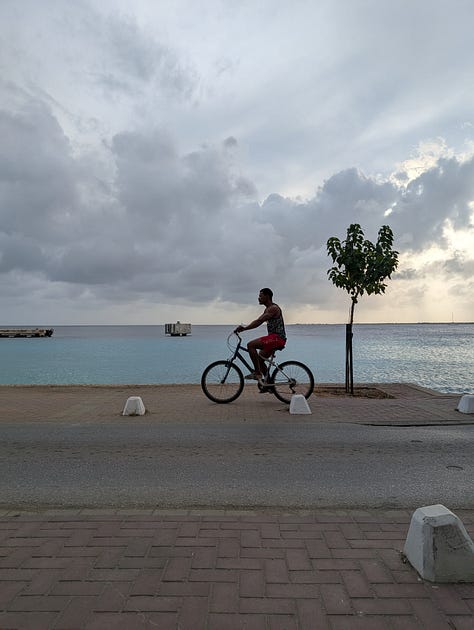

Why Context Matters in Mobility Projects
To achieve long-term change in sustainable development, it is essential to recognise that the systems engaging with are inherently social. Much of their context is shaped by the social dynamics present in that environment. Therefore, before implementing any interventions, we must understand the social context of the area in which it is intended to work (Blackstock, Kelly, & Horsey, 2007). Beyond just understanding, it is crucial to build trust and encourage genuine participation from the community members who make up this social fabric. Without establishing this trust, even well-intentioned interventions, backed by significant effort, may fail to resonate with the local context or could even be rejected by stakeholders due to a lack of trust in those proposing the initiatives. Measures need to be adapted to the specific context, and where possible, they should be developed collaboratively to foster trust and ensure the success of the initiative (Matson, Clark, & Andersson, 2016, pp. 121–148).
The reality is that the people who truly understand the context and how it can be improved are those directly taking part, working, living and experiencing it. Therefore, they need to participate in the entire process, from defining the problem to co-creating solutions. The importance of stakeholders' engagement has a wide consensus among sustainability professionals, recognising that stakeholders can enhance quality, durability, and social equity in solutions. Nevertheless, their inclusion comes with difficulties, starting from identifying who the relevant stakeholders to how to ensure that all of them are equally involved in the project (Matson, Clark, & Andersson, 2016, pp. 121–148; Reed, 2008).
Mapping Stakeholders and Navigating Social Dynamics in Bonaire
In this project, the first phase focused on conducting a stakeholder and policy analysis to map the communities, institutions, and social and political organisations shaping the local mobility landscape. This process uncovered several advocacy groups working on climate change and sustainability, as well as past efforts to promote active mobility. While some policies supporting sustainable transport exist, there is little evidence of their effective implementation. This leads to another important insight shared by stakeholders: although local governments are officially elected for four-year terms, frequent shifts in coalitions and political alliances often result in shorter legislative cycles. This political instability is commonly seen as a barrier to long-term planning and has contributed to a sense of weariness among Bonaire’s citizens, a weariness that has, in some cases, led to detachment and distrust toward new mobility initiatives.
Understanding the reasons behind these changes is crucial, as local authorities are key actors in the measures that need to be implemented. However, stakeholders often discuss the political context in vague terms, assuming a shared understanding that, as external researchers, the research team did not always possess. This situation could have led to lost information, misunderstandings, or conflicts due to a lack of context.
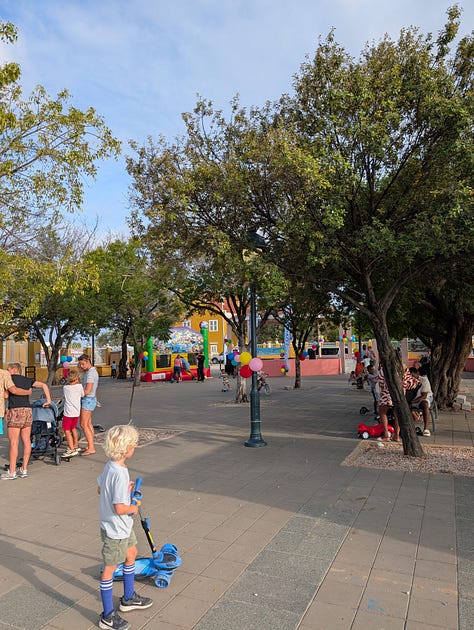
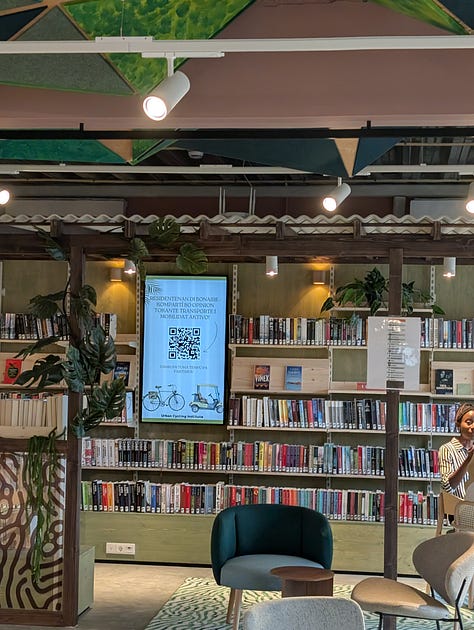
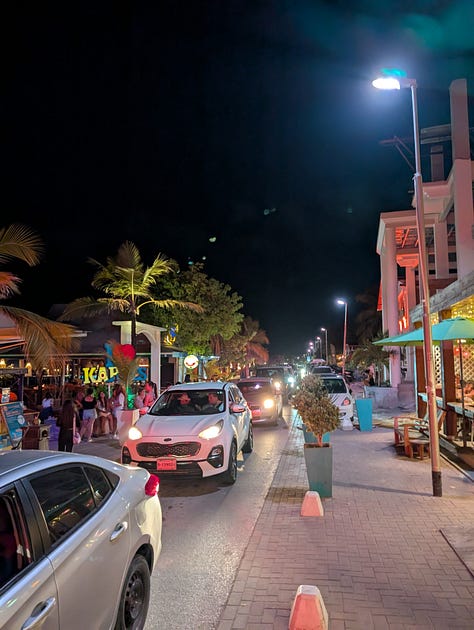
To address this, a straightforward approach was taken: analysing official documents and press reports to better understand how the local government operates in practice. Through this process, several local newspapers were identified, its reporting offered valuable insights—not only into political instability but also into how broader issues are perceived across the island. This experience highlighted the challenges of engaging with a context as an outsider. In Bonaire, understanding the nuances of the local landscape required time and effort, but doing so was essential, not just to interpret current dynamics more accurately, but also to engage more meaningfully with residents and institutions.
One of the key reasons for understanding the political context, particularly the instability of the local government, was to grasp the broader social dynamics at play. This understanding is essential to avoid reproducing existing power imbalances or unintentionally excluding certain groups during the project. These concerns become especially relevant when engaging stakeholders, as coming from outside the local context makes it more challenging to recognise and navigate the diverse actors involved. It becomes crucial to identify which groups are distinct, which ones hold influence, and which should be integrated into the process. In the case of Bonaire, this was further complicated by the existing stakeholder landscape and a noticeable lack of leadership in certain communities.
Overcoming Barriers to Inclusion: Engaging Underrepresented Voices
In the first year of the research, there was limited participation from two specific communities: Spanish-speaking immigrants, primarily from Latin America, and individuals born on Bonaire or elsewhere in the Dutch Caribbean who speak Papiamentu. Although these groups were identified early on, integrating them into the research process proved challenging and revealed deeper, more complex social dynamics that were not immediately apparent in the research, dynamics that risked undermining the project’s egalitarian approach. As a result, engaging these communities became one of the main challenges in the second year of research. Their perspectives were essential to ensure that the findings were comprehensive and free from bias. Without their input, the proposed solutions risked being misaligned with their actual needs and could end up reflecting only the views of those already involved in the project, such as English and Dutch-speaking communities.


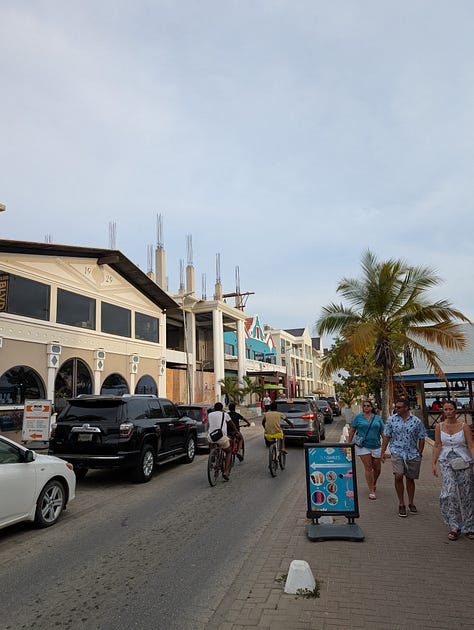
The engagement with the Spanish-speaking and Papiamentu-speaking communities showed significant initial challenges, as their participation and input during the first year were quite low, without the reason for this being clear. The main objectives of the work of the second year of the project was precisely to understand what was behind this lack of participation and how to solve it.
One of the strategies the research team implemented was to research social media, since the initial impulse the previous year was to use surveys and other events through LinkedIn, which had not been effective with these two communities. During the research, which started on Facebook (one of the primary communication channels on the island) active groups for Bonairean residents were found, mostly related to the sale of services or second-hand goods, renting of houses or for English-speaking immigrants. Some groups appeared relevant to the Spanish-speaking community; these were mainly business accounts or accounts that publicised events, and those more related to social groups were less active, at least on Facebook. However, those groups served as a key piece of information for further research.
One of the colleagues involved in the research, who was on the island, identified that the Spanish-speaking community moved in certain circles, including sports clubs. Building on this, although many of these Facebook groups had little activity, it was explored if they have accounts linked to the same sports clubs on other social media, which led to other active accounts from restaurants, clubs and other local entities on Instagram. This research helped to identify the environments in which the community engages, aiding both the distribution of our survey and our approach during the visit to Bonaire.
Final Thoughts and Lessons Learned
Later on, during the annual visit to the island, the research team discovered that Facebook and Instagram are not the primary platforms for communication regarding events or news on the island. Instead, WhatsApp groups are more commonly used. This insight was something impossible to gain without first encountering barriers, which ultimately guided the research in the right direction. Additionally, it was learned that the Spanish-speaking community organised gatherings differently based on their country of origin, leading to varying communication channels. This information will likely improve the engagement with the Spanish-speaking community in the future. This example illustrates the complex social dynamics that can be difficult to foresee and understand without the context provided by local inhabitants (Lang et al., 2012; Matson, Clark, & Andersson, 2016, pp. 121–148).
Thanks to this approach, in this second year, not only the Spanish and Papiamentu-speaking communities' involvement did increase, but previously unknown social dynamics were also uncovered and will ensure a more inclusive development of the project in the years to come.
Without this effort, it would have been difficult to include these communities, which could have reproduced the social or power dynamics of the island, and the recommendations would not have been appropriate for those communities less active in the project. This was considered a significant mistake, as the observations carried out during the research had highlighted that both communities were very active in active modes of mobility. In this way, with an approach that is perhaps out of the standard, a more egalitarian and inclusive direction in the project was pursued. There have already been short-term results, and a starting point has been established to improve these results in the remaining two years of the project, so that by the end, the proposed actions will respond to the needs and include the perspectives of all citizens, thus ensuring the long-term success of the project.
Written by , Researcher at Urban Cycling Institute.
Interested in writing or sponsoring an article? Send us a pitch at media@urbancyclinginstitute.org
Blackstock, K. L., Kelly, G. J., & Horsey, B. L. (2007). Developing and applying a framework to evaluate participatory research for sustainability. Ecological economics, 60(4), 726-742.
Lang, D. J., Wiek, A., Bergmann, M., Stauffacher, M., Martens, P., Moll, P., Swilling, M., & Thomas, C. J. (2012). Transdisciplinary research in sustainability science: practice, principles, and challenges. Sustainability Science, 7(S1), 25-43. https://doi.org/10.1007/s11625-011-0149-x
Matson, P., Clark, W. C., & Andersson, K. P. (2016). Linking knowledge with action. En P. Matson, W. C. Clark, & K. P. Andersson (Eds.), Pursuing sustainability: A guide to the science and practice (pp. 121–148). Princeton University Press.
Reed, M. S. (2008). Stakeholder participation for environmental management: A literature review. Biological Conservation, 141(10), 2417-2431. https://doi.org/10.1016/j.biocon.2008.07.014
Taillandier, C., Dijk, M., & Vialleix, M. (2023). Back to the Future: “De-Transition” to Low-Car Cities. Future Transportation, 3(2), 808-839. https://doi.org/10.3390/futuretransp3020046
Learn more:







